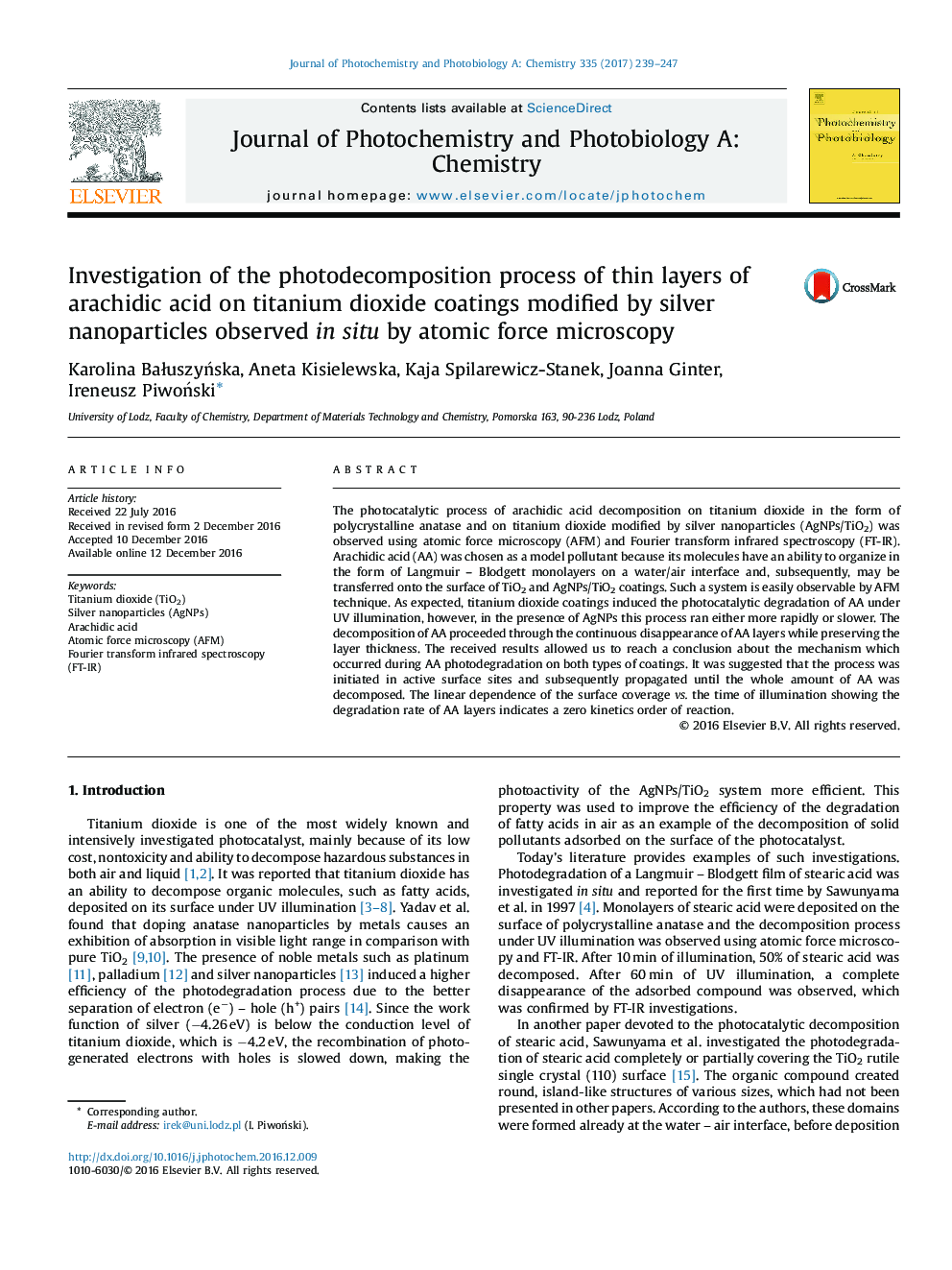| Article ID | Journal | Published Year | Pages | File Type |
|---|---|---|---|---|
| 4754137 | Journal of Photochemistry and Photobiology A: Chemistry | 2017 | 9 Pages |
Abstract
The photocatalytic process of arachidic acid decomposition on titanium dioxide in the form of polycrystalline anatase and on titanium dioxide modified by silver nanoparticles (AgNPs/TiO2) was observed using atomic force microscopy (AFM) and Fourier transform infrared spectroscopy (FT-IR). Arachidic acid (AA) was chosen as a model pollutant because its molecules have an ability to organize in the form of Langmuir - Blodgett monolayers on a water/air interface and, subsequently, may be transferred onto the surface of TiO2 and AgNPs/TiO2 coatings. Such a system is easily observable by AFM technique. As expected, titanium dioxide coatings induced the photocatalytic degradation of AA under UV illumination, however, in the presence of AgNPs this process ran either more rapidly or slower. The decomposition of AA proceeded through the continuous disappearance of AA layers while preserving the layer thickness. The received results allowed us to reach a conclusion about the mechanism which occurred during AA photodegradation on both types of coatings. It was suggested that the process was initiated in active surface sites and subsequently propagated until the whole amount of AA was decomposed. The linear dependence of the surface coverage vs. the time of illumination showing the degradation rate of AA layers indicates a zero kinetics order of reaction.
Keywords
Related Topics
Physical Sciences and Engineering
Chemical Engineering
Bioengineering
Authors
Karolina BaÅuszyÅska, Aneta Kisielewska, Kaja Spilarewicz-Stanek, Joanna Ginter, Ireneusz PiwoÅski,
